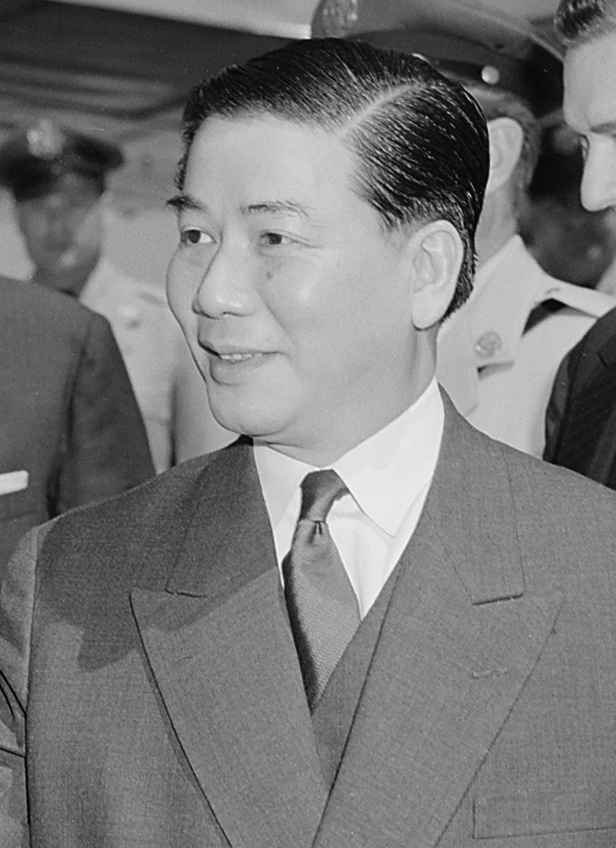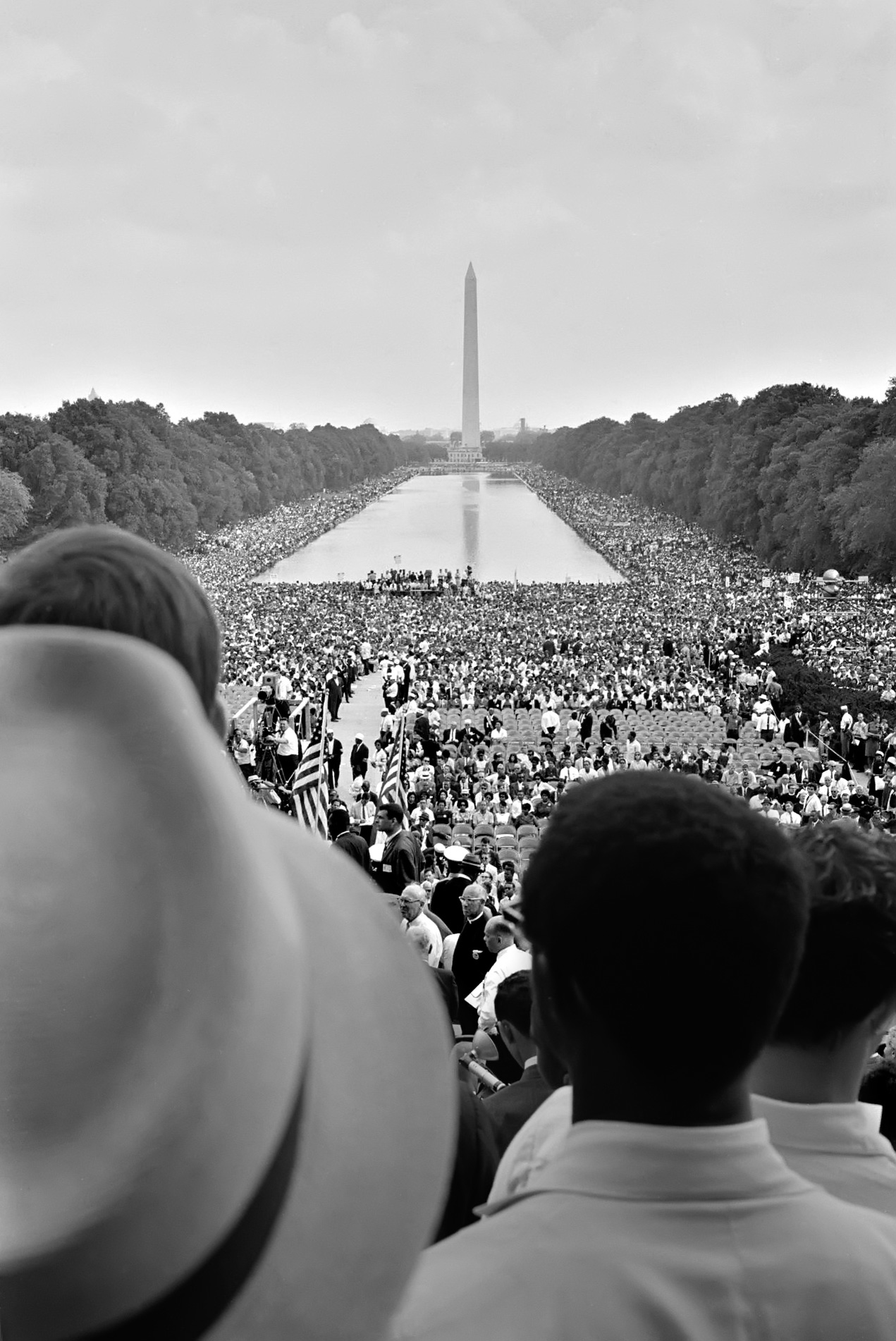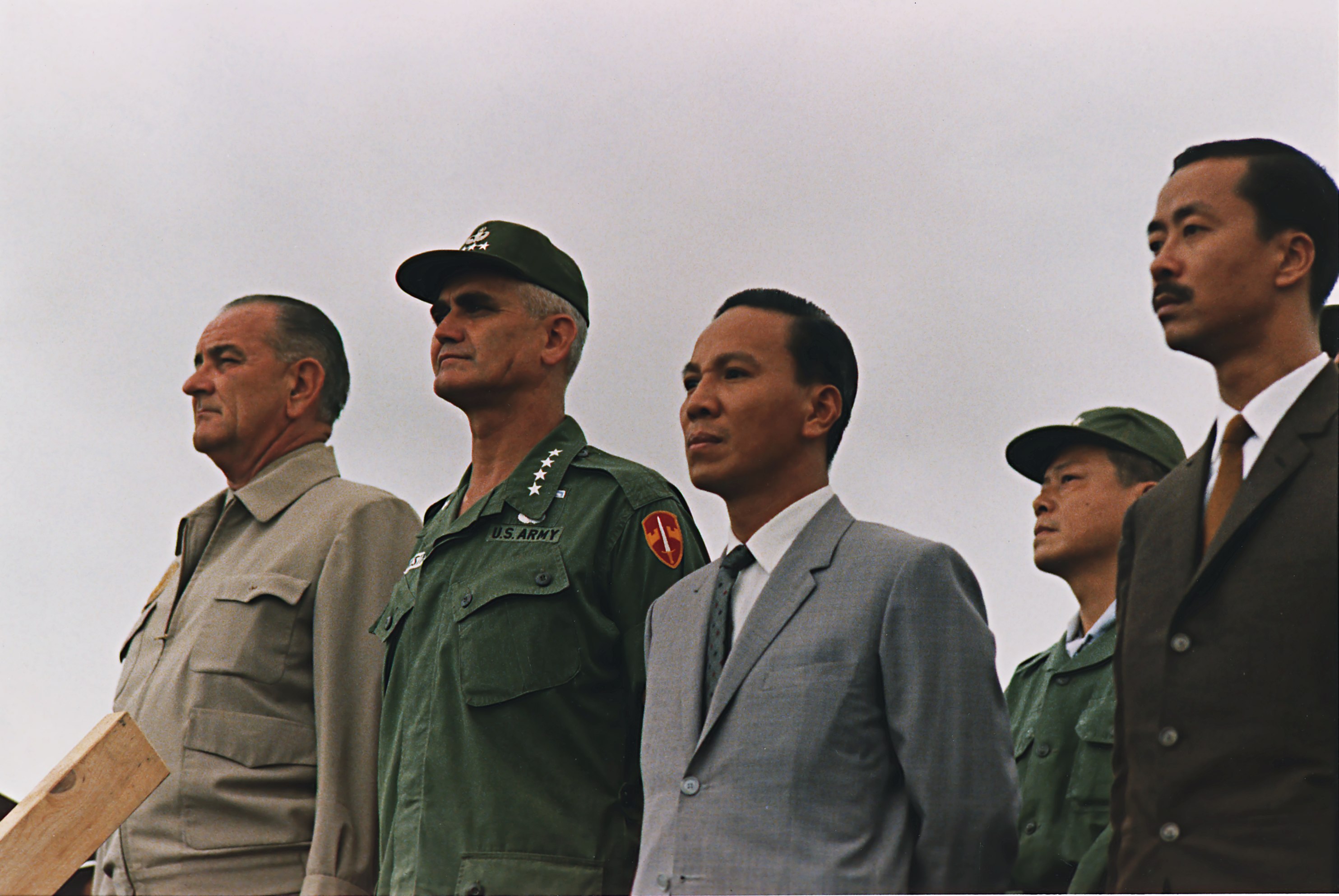|
Nguyễn Chánh Thi
Nguyễn Chánh Thi (; 23 February 1923 – 23 June 2007) was an officer in the Army of the Republic of Vietnam (ARVN). He is best known for being involved in frequent coups in the 1960s and wielding substantial influence as a key member of various juntas that ruled South Vietnam from 1964 until 1966, when he was overpowered by Republic of Vietnam Air Force chief and Prime Minister Nguyễn Cao Kỳ in a power struggle and exiled to the United States. Known for his flamboyant style and hostility to US advice, Thi's ousting was supported by the American leadership, who backed Kỳ's pro-US regime. Thi joined the French Army at the age of 17 and was captured by Japan after they invaded French Indochina during World War II. After several months, he escaped and later transferred to the Vietnamese National Army of the French-backed State of Vietnam, which, in October 1955, became the ARVN and Republic of Vietnam (South Vietnam), respectively. A paratrooper, he fought for t ... [...More Info...] [...Related Items...] OR: [Wikipedia] [Google] [Baidu] |
Huế
Huế (formerly Thừa Thiên Huế province) is the southernmost coastal Municipalities of Vietnam, city in the North Central Coast region, the Central Vietnam, Central of Vietnam, approximately in the center of the country. It borders Quảng Trị province, Quảng Trị to the north, Quảng Nam and Đà Nẵng to the south, Salavan province, Salavan of Laos to the west and the South China Sea to the east. As one of the country's six direct-controlled municipality, direct-controlled municipalities, it falls under the administration of the Politics of Vietnam, central government. Huế has 128 km of coastline, 22,000 hectare, ha of lagoons and over 200,000 ha of forest. The city is located in the middle of the North Central and South Central regions (including the South Central Coast and Central Highlands (Vietnam), Central Highlands), and is transitional in many aspects: geology, climate, administrative division and local culture. Huế and its surroundings is widely k ... [...More Info...] [...Related Items...] OR: [Wikipedia] [Google] [Baidu] |
September 1964 South Vietnamese Coup Attempt
The September 1964 South Vietnamese coup attempt took place before dawn on September 13, 1964, when the ruling military junta of South Vietnam, led by General Nguyễn Khánh, was threatened by a coup attempt headed by Generals Lâm Văn Phát and Dương Văn Đức, who sent dissident units into the capital Saigon. They captured various key points and announced over national radio the overthrow of the incumbent regime. With the help of the Americans, Khánh was able to rally support and the coup collapsed the next morning without any casualties. In the month leading up to the coup, Khánh's leadership had become increasingly troubled. He had tried to augment his powers by declaring a state of emergency, but this only provoked large-scale protests and riots calling for an end to military rule, with Buddhist activists at the forefront. Fearful of losing power, Khánh began making concessions to the protesters and promised democracy in the near future. He also removed several ... [...More Info...] [...Related Items...] OR: [Wikipedia] [Google] [Baidu] |
Nguyễn Khánh
Nguyễn Khánh (}; 8 November 192711 January 2013) was a South Vietnamese military dictator and Army of the Republic of Vietnam general who served in various capacities as head of state and prime minister of South Vietnam while at the head of a military junta from January 1964 until February 1965. He was involved in or against many coup attempts, failed and successful, from 1960 until his defeat and exile from South Vietnam in 1965. Khánh lived out his later years with his family in exile in the United States. He died in 2013 in San Jose, California, at age 85. Early life and education Khánh was born in Trà Vinh in the Mekong Delta region in the far south of Vietnam (then under jurisdiction of the French Cochinchina). His mother was a property manager in the Central Highlands resort town of Đà Lạt, and lived away from the family home in the deep south. Khánh's father was a wealthy landlord who lived in the Mekong Delta with a mistress, the popular cải lương pe ... [...More Info...] [...Related Items...] OR: [Wikipedia] [Google] [Baidu] |
Arrest And Assassination Of Ngô Đình Diệm
On 2 November 1963, Ngô Đình Diệm, the president of South Vietnam, was arrested and assassinated in a CIA-backed coup d'état led by General Dương Văn Minh. After nine years of autocratic and nepotistic family rule in the country, discontent with the Diệm regime had been simmering below the surface and culminated with mass Buddhist protests against longstanding religious discrimination after the government shooting of protesters who defied a ban on the flying of the Buddhist flag. The Army of the Republic of Vietnam (ARVN) launched a bloody overnight siege on Gia Long Palace in Saigon. When rebel forces entered the palace, Diệm and his adviser and younger brother Ngô Đình Nhu were not present, having escaped to a loyalist shelter in Cholon. The brothers kept in communication with the rebels through a direct link from the shelter to the palace, and misled them into believing that they were still in the palace. The Ngô brothers soon agreed to surrender and ... [...More Info...] [...Related Items...] OR: [Wikipedia] [Google] [Baidu] |
1963 South Vietnamese Coup
Events January * January 1 – Bogle–Chandler case: Commonwealth Scientific and Industrial Research Organisation scientist Dr. Gilbert Bogle and Mrs. Margaret Chandler are found dead (presumed poisoned), in bushland near the Lane Cove River, Sydney, Australia. * January 2 – Vietnam War – Battle of Ap Bac: The Viet Cong win their first major victory. * January 9 – A total penumbral lunar eclipse is visible in the Americas, Europe, Africa and Asia, and is the 56th lunar eclipse of Lunar Saros 114. Gamma has a value of −1.01282. It occurs on the night between Wednesday, January 9 and Thursday, January 10, 1963. * January 13 – 1963 Togolese coup d'état: A military coup in Togo results in the installation of coup leader Emmanuel Bodjollé as president. * January 17 – A last quarter moon occurs between the penumbral lunar eclipse and the annular solar eclipse, only 12 hours, 29 minutes after apogee. * January 19 – Soviet spy Gheorg ... [...More Info...] [...Related Items...] OR: [Wikipedia] [Google] [Baidu] |
Cambodia
Cambodia, officially the Kingdom of Cambodia, is a country in Southeast Asia on the Mainland Southeast Asia, Indochinese Peninsula. It is bordered by Thailand to the northwest, Laos to the north, and Vietnam to the east, and has a coastline along the Gulf of Thailand in the southwest. It spans an area of , dominated by a low-lying plain and the confluence of the Mekong river and Tonlé Sap, Southeast Asia's largest lake. It is dominated by a tropical climate and is rich in biodiversity. Cambodia has a population of about 17 million people, the majority of which are ethnically Khmer people, Khmer. Its capital and most populous city is Phnom Penh, followed by Siem Reap and Battambang. In 802 AD, Jayavarman II declared himself king, uniting the warring Khmer princes of Chenla Kingdom, Chenla under the name "Kambuja".Chandler, David P. (1992) ''History of Cambodia''. Boulder, CO: Westview Press, . This marked the beginning of the Khmer Empire. The Indianised kingdom facilitated ... [...More Info...] [...Related Items...] OR: [Wikipedia] [Google] [Baidu] |
Bình Xuyên
Bình Xuyên Force (, ), often linked to its infamous leader, General Lê Văn Viễn (nicknamed "Bảy Viễn"), was an independent military force within the Vietnamese National Army whose leaders once had lived outside the law and had sided with the Việt Minh. During its heyday, Bình Xuyên funded itself with organized crime activities in Saigon while effectively battling Communist forces. History Formation Bình Xuyên groups first emerged in the early 1920s as a loosely organized coalition of gangs and contract laborers about two hundred to three hundred strong, it was named after the eponymous hamlet of Chánh Hưng, Saigon (now is part of Rạch Ông Ward, District 8, Ho Chi Minh City). Bình Xuyên's early history consisted of cycles of kidnapping, piracy, pursuit, and occasionally imprisonment. One of the gang leaders was Ba Dương, a kingpin in the Saigon– Cholon area. His lieutenants included Huỳnh Văn Trí (a.k.a. Mười Trí), Dương Văn Hà (a.k.a. N ... [...More Info...] [...Related Items...] OR: [Wikipedia] [Google] [Baidu] |
Ngô Đình Diệm
Ngô Đình Diệm ( , or ; ; 3 January 1901 – 2 November 1963) was a South Vietnamese politician who was the final prime minister of the State of Vietnam (1954–1955) and later the first president of South Vietnam ( Republic of Vietnam) from 1955 until his capture and assassination during the CIA-backed 1963 coup d'état. Diệm was born into a prominent Catholic family with his father, Ngô Đình Khả, being a high-ranking mandarin for Emperor Thành Thái during the French colonial era. Diệm was educated at French-speaking schools and considered following his brother Ngô Đình Thục into the priesthood, but eventually chose to pursue a career in the civil service. He progressed rapidly in the court of Emperor Bảo Đại, becoming governor of Bình Thuận Province in 1929 and interior minister in 1933. However, he resigned from the latter position after three months and publicly denounced the emperor as a tool of France. Diệm came to suppo ... [...More Info...] [...Related Items...] OR: [Wikipedia] [Google] [Baidu] |
French Indochina
French Indochina (previously spelled as French Indo-China), officially known as the Indochinese Union and after 1941 as the Indochinese Federation, was a group of French dependent territories in Southeast Asia from 1887 to 1954. It was initially a federation of French colonial empire, French colonies (1887–1949), later a confederation of French associated states (1949–1954). It comprised French protectorate of Cambodia, Cambodia, French protectorate of Laos, Laos (from 1899), Guangzhouwan (1898–1945), French Cochinchina, Cochinchina, and Nguyễn dynasty, Vietnamese regions of Tonkin (French protectorate), Tonkin and Annam (French protectorate), Annam. It was established in 1887 and was dissolved in 1954. In 1949, Vietnam was reunited and it regained Cochinchina. Its capitals were Hanoi (1902–1945) and Saigon (1887–1902, 1945–1954). The Second French Empire Cochinchina campaign, colonized Cochinchina in 1862 and established a French protectorate of Cambodia, protect ... [...More Info...] [...Related Items...] OR: [Wikipedia] [Google] [Baidu] |
Imperial Japan
The Empire of Japan, also known as the Japanese Empire or Imperial Japan, was the Japanese nation state that existed from the Meiji Restoration on January 3, 1868, until the Constitution of Japan took effect on May 3, 1947. From Japan–Korea Treaty of 1910, 1910 to Japanese Instrument of Surrender, 1945, it included the Japanese archipelago, the Kuril Islands, Kurils, Karafuto Prefecture, Karafuto, Korea under Japanese rule, Korea, and Taiwan under Japanese rule, Taiwan. The South Seas Mandate and Foreign concessions in China#List of concessions, concessions such as the Kwantung Leased Territory were ''de jure'' not internal parts of the empire but dependent territories. In the closing stages of World War II, with Japan defeated alongside the rest of the Axis powers, the Japanese Instrument of Surrender, formalized surrender was issued on September 2, 1945, in compliance with the Potsdam Declaration of the Allies of World War II, Allies, and the empire's territory subsequent ... [...More Info...] [...Related Items...] OR: [Wikipedia] [Google] [Baidu] |
French Army
The French Army, officially known as the Land Army (, , ), is the principal Army, land warfare force of France, and the largest component of the French Armed Forces; it is responsible to the Government of France, alongside the French Navy, French Air and Space Force, and the National Gendarmerie. The Army is commanded by the Chief of Staff of the French Army (CEMAT), who is subordinate of the Chief of the Defence Staff (France), Chief of the Defence Staff (CEMA), who commands active service Army units and in turn is responsible to the President of France. CEMAT is also directly responsible to the Ministry of Armed Forces (France), Ministry of the Armed Forces for administration, preparation, and equipment. The French Army, following the French Revolution, has generally been composed of a mixed force of conscripts and professional volunteers. It is now considered a professional force, since the French Parliament suspended the Conscription in France, conscription of soldiers. Acc ... [...More Info...] [...Related Items...] OR: [Wikipedia] [Google] [Baidu] |
Nguyễn Cao Kỳ
Nguyễn Cao Kỳ (; 8 September 1930 – 23 July 2011) was a South Vietnamese military officer and politician who served as the chief of the Republic of Vietnam Air Force in the 1960s, before leading the nation as the prime minister of South Vietnam in a military junta from 1965 to 1967. Then, until his retirement from politics in 1971, he served as vice president to bitter rival General Nguyễn Văn Thiệu, in a nominally civilian administration. Born in Northern Vietnam, Kỳ joined the Vietnamese National Army of the French-backed State of Vietnam and started as an infantry officer before the French sent him off for pilot training. After the French withdrew from Vietnam and the nation was partitioned, Kỳ moved up the ranks of the Republic of Vietnam Air Force to become its leader. In November 1963, Kỳ participated in the coup that deposed president Ngô Đình Diệm and resulted in Diệm's assassination. In 1964, Kỳ became prominent in junta politics, and was ... [...More Info...] [...Related Items...] OR: [Wikipedia] [Google] [Baidu] |







